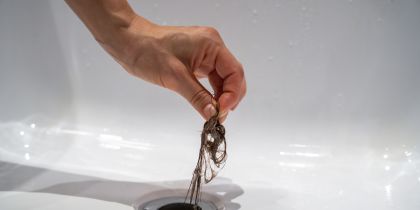Drain Odours - The Main Causes And Cures

There are few things more unpalatable than the smell from a foul drain - especially inside a house. Although it is a fairly common occurrence it is generally easily preventable, assuming the overall health of your drainage system is good. Follow the steps below to banish this problem for good.
Failing Traps
This is the most common cause of drain odours in a kitchen or bathroom. The purpose of a waste trap (often referred to as a U bend by homeowners) is to stop any odours escaping from the drain through the waste outlet in a sink, basin, bath, shower or bidet. How it works is that the “U” section of the trap is always full of water, forming a barrier between the drain and the waste outlet, as smells will not penetrate the water. Every time you run water away, the old water in the trap is replaced by newer water, hence it never stagnates.
Trap Seal Syphonage
There are a number of reasons why traps fail. The commonest reason is syphonage, usually associated with poor layout of pipework. Excessive pipe runs, the wrong type of trap being uses, too steep falls and short waste pipe connections into soil pipes can all cause the water in a trap to be removed by syphonage. The effect is the same as when you see dead leaves being drawn along by the wind behind a bus – only in this case it is the water from your trap being drawn along by the main flow of water. When it happens in a trap it is usually accompanied by a gurgling and/or sucking noise.
Anti Syphon Traps
Fortunately, there is a simple solution that doesn’t involve the re-design of all of your pipework. Simply replace the traps with anti-syphon traps (sometimes called anti-vac traps in the trade). These clever traps incorporate a simple valve which opens whenever a syphoning pressure occurs, drawing in air and leaving the trap seal intact. The valve is a one-way valve so that it only draws air in – no gases can escape outwards. They are available to in all shapes and sizes to fit all bathroom and kitchen appliances.
 Blocked Traps
Blocked Traps
There are two other reasons a trap might fail. If the body of the trap becomes full of debris (usually hair or food scrapings), this will transmit smells back into the house. Usually the actual flow of water will be affected before the smell is noticed as it will become slow and gurgly. The solution is to remove the centre part of the trap be unscrewing the threads and clean it out, taking care to ensure that any O rings are correctly sited when you put it back together.
TRAP SEAL EVAPORATION
The other less common reason for trap seal failure is evaporation. If a kitchen or bathroom is unused for any length of time in very warm weather the body of water inside the trap can evaporate. To resolve this, simply run a fresh stream of water through the waste and the seal will be reinstated.
Gullies
If there is a drain smell at ground level outside the house, it is often caused by a build up of debris in a gully, usually outside a kitchen or bathroom. Again this is usually accompanied by a slow or noisy flow from the kitchen or bathroom appliances. Gullies are open topped fittings protected by a grating that allow either waste pipes from a kitchen or bathroom or rainwater pipes to be connected to the underground drainage system. The principal of a gully is the same as any other trap – the body of a gully forms the “U bend” which fills with water and prevents drain odours from escaping.
Over a period of time, dirt, leaves and sediment get washed into a gully and gradually fill the chamber, slowing the water flow. As the sludge builds up, it becomes too heavy to be washed away by the flow of water and it stagnates. Some gullies such as modern PVC bottle gullies have an inner chamber which, with the grating removed, can be withdrawn allowing the body of the gully to be cleaned out. With older clay gullies (and unfortunately some PVC types) the only real solution is to pull on a pair of gloves and clean out the gully by hand.
Internal Manhole Covers
Sometimes when extensions or conservatories are built they are constructed over drains. Whilst this isn’t best practice (ideally the drain should be re-routed), this can cause a problem with odours escaping. The simple solution is to replace the manhole cover with one that is designed for interior use; these are available in a range of shapes and sizes from specialist Drainage merchants. You need to measure the clear opening space (length x width) with the existing cover removed and the merchant will be able to advise you on the correct replacement cover.
External Manhole Covers
If smells are coming from an external manhole cover, this is usually a symptom of another problem – either the cover itself is faulty or more likely there is a build up of waste products in the drain. You should remove the cover and investigate. Never try to mend a broken manhole cover or frame, as there are serious safety implications. Instead you should buy and install a new cover and frame, using the same measurements as described above. It is a relatively simple job that anyone competent in DIY can tackle.






